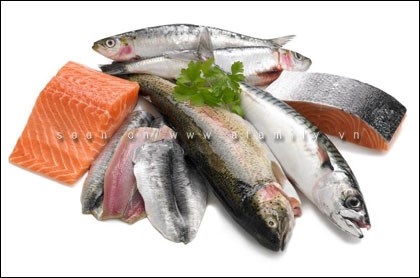What will seafood exports be like in 2024?
Wednesday, January 10,2024
AsemconnectVietnam - In 2023, seafood exports did not reach the finish line and only reached 9 billion USD. What will seafood exports be like in 2024 in a context where the market is still not less difficult?
Last year, high inflation, reduced demand, large inventories, falling export prices and difficulties and inadequacies in domestic production and business caused seafood export results to decrease by 17% compared to 2022, reaching only 9 billion USD.
Shrimp products continued to compete with Ecuador and India in terms of price and supply, the oversupply situation may continue until the first half of 2024.
The Vietnam Association of Seafood Exporters and Producers (VASEP) said that in 2024, many difficulties will continue to dominate the situation of seafood production and export. In addition, there will be other challenges that will slow down the recovery of exports next year.
VASEP also made 10 comments on market trends and seafood export forecasts.
First, inflation in major countries has been contained, the world economy has bottomed out, but recovery is slow, affecting demand for seafood consumption. The Russia-Ukraine conflict, fighting in the Middle East and other geopolitical issues around the world certainly disrupt global trade, including seafood. Consequences: increased transportation costs, increased prices of input products for aquaculture and seafood processing. It could also cause a new inflationary storm that will affect seafood consumption demand in 2024.
Second, the cycle of price decline for many aquatic species may continue until the end of the first half of 2024.
Third, the US market's demand is slow to recover and there is an increasing trend of importing cheap shrimp from Ecuador. Shrimp exports to the United States will be more difficult if countervailing duties (CVD) are imposed.
Fourth, the Chinese market's demand recovers stronger, but prices are low, making it difficult to compete.
Fifth, feed costs continue to be a major challenge for both the shrimp and pangasius farming industries.
Sixth, shrimp products continue to compete with Ecuador and India in terms of price and supply, the oversupply situation may continue until the first half of the year (the world shrimp production in 2024 will increase by 4.8% to 5.9 million tonnes). Ecuador and India are increasing their market share in the US, China, EU and Japan, while increasing processed shrimp exports, although the proportion is still modest.
Seventh, with pangasius products, inventory in the US, China, and EU markets is no longer a problem. Export prices will increase again in those markets. In addition to frozen fillets, the trend of importing value-added pangasius and by-products (fish maw, pangasius patties) continues to increase.
Eighth, with seafood products, the IUU yellow card continues to be a challenge. If the problem is not resolved in 2024, it will cause exports to the EU to stagnate because procedures for confirming and certifying exploited seafood are still inadequate because resources, human resources and infrastructure are not met. Industries such as tuna, squid, octopus and marine fish are most affected. Regarding consumption, market demand focuses on cheaper product segments such as canned fish, raw fish for processing canned fish, dried fish, and dried shrimp.
Ninth, there will be an increased outsourcing trend after the Chinese seafood processing industry was accused of using forced labor and China's move to ban Japanese seafood imports caused Japanese factories to rush going to Vietnam to find processing partners. In addition, businesses may increase the imports of raw materials for export production and increase processing for the Japanese and US markets.
Tenth, it is forecast that Vietnam's seafood exports will gradually recover in 2024 and become more positive in the second half of the year. With adaptation and adjustment to the market context, it is predicted that seafood businesses will help the industry's export sales recover to 9.5 - 10 billion USD in 2024. In particular, the shrimp industry aims to earn 4 billion USD, pangasius to earn about 1.9 billion USD, the remaining seafood products are expected to earn about 3.6 - 3.8 billion USD.
CK
Source: VITIC/congthuong.vn
Seafood exports aim to reach 10 billion USD in 2024
List of 6 agricultural, forestry and fishery export products with export turnover exceeding the 3 billion USD in 2023
European investors upbeat about Vietnam’s business landscape
Vietnamese economy recovers last year: Expert
Rice export soars to record high in 2023
Export opportunities to be optimised in 2024: Minister
DAILY: Vietnamese pepper prices remained unchanged on January 8
DAILY: Vietnamese coffee prices rose by 400 VND on January 8
Conditions in place for industrial production to rebound in 2024
An Giang exports first green-peel elephant mangoes to Australia, US
More aquaculture establishments allowed to export to markets
Vietnamese firms invest nearly 421 million USD overseas in 2023
Rubber exports earned only 2.89 billion USD in 2023
RoK works to operate logistic centre in Vietnam


